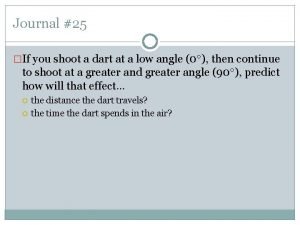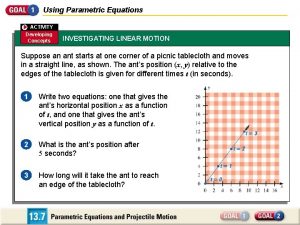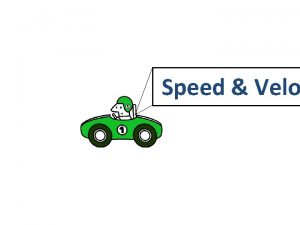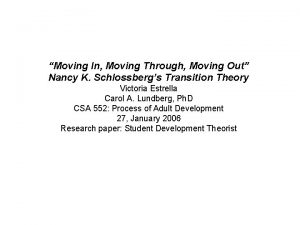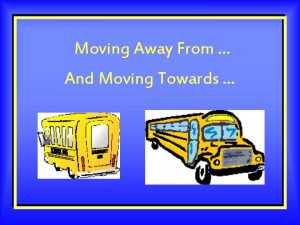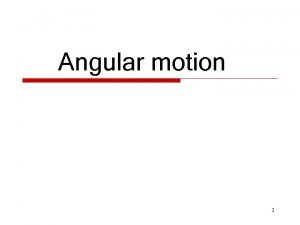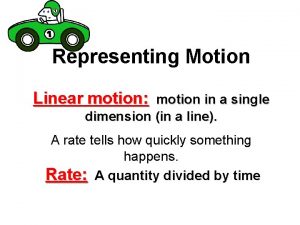LINEAR MOTION Linear motion is moving in a











- Slides: 11

LINEAR MOTION Linear motion is moving in a straight path. Motion is a relative thing. It depends on what you are comparing it to -While you are sitting in your seat are you moving? -Relative to your desk – no -Relative to the sun - yes

Speed is the distance traveled by an object over a certain amount of time (mile/hr) s =d/t s means speed (in meters /second) d means distance (in meters) t means time (in seconds)

Speeds at Different Times Instantaneous Speed is the speed that an object is traveling at that moment -Do all objects in motion always travel at the same speed? Average Speed is the total distance that an object traveled over then entire time it took to get there

Average Speed = total distance covered / time interval If you drove down to Detroit to see a Tigers game a distance of 117 miles and it took you 5 hours because you stopped for lunch and gas what is your average speed? Average Speed = total distance covered / time interval Average Speed = 117 miles/5 hours = 23. 4 miles/hr

Velocity is speed in a given direction -Every time an object changes its direction even if it doesn’t change speed, that object is changing its velocity.

Acceleration is the rate at which an objects velocity is changing. a = ∆v/t a means acceleration (in meters / seconds 2) ∆ means change v means velocity (in meters / second) t means time (in seconds)

Calculation Acceleration A sports car can go from 0 miles/hr to 60 miles/hr in 4 seconds. What is the rate of acceleration of that car? a = ∆v/t a = (60 miles/hr – 0 miles/hr)/4 seconds a = 15 miles/hr x seconds This means on average the car goes 15 miles/hr faster every second

Free Fall Objects accelerate when they are falling to Earth. - the acceleration of gravity is 10 m/s 2 Do all objects that fall from the sky continue to increase their speed until they hit the Earth or is their some limit to their speed? - At some point the object will reach terminal velocity or the speed where it will not fall any faster (120 mph)

Wind Resistance If all objects accelerate because of gravity at the same rate (10 m/s 2), then why does a feather fall faster than a steel marble? The feather catches more area because it has a large surface area for its size. This slow the feather down. Wind Resistance is the force of air particles colliding with a falling object and slowing it down

What about objects falling from the sky? Hang time is how long a projectile can hang in the air. - examples are jumping, punting the ball in football, launching a rocket v=gt v means velocity (in meters/second) g means the acceleration due to gravity (10 m/s 2) t means time in seconds

Calculation Hang Time d = ½ g∆t 2 d means distance the object traveled (in meters) g means the acceleration due to gravity (10 m/s 2) ∆ means change t means time is seconds Solving for this equation for time gives us the equation; t = √ 2 d/g
 The path that the projectile follows
The path that the projectile follows Passive rom vs active rom
Passive rom vs active rom Simple harmonic motion equations
Simple harmonic motion equations An object in motion stays in motion
An object in motion stays in motion Chapter 2 section 1 describing motion answer key
Chapter 2 section 1 describing motion answer key The main difference between speed and velocity involves
The main difference between speed and velocity involves Section 1 describing motion
Section 1 describing motion Describing and measuring motion worksheet answer key
Describing and measuring motion worksheet answer key Motion section 1 describing motion
Motion section 1 describing motion Parametric equations activity
Parametric equations activity Uniform linear motion examples
Uniform linear motion examples In drilling machine the drill is a mcq
In drilling machine the drill is a mcq
